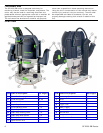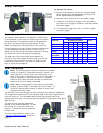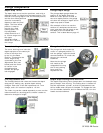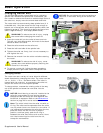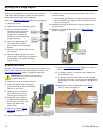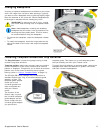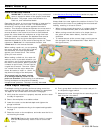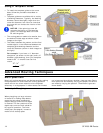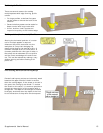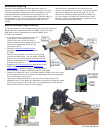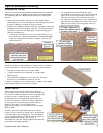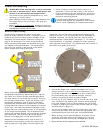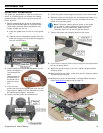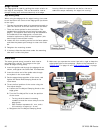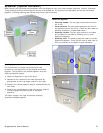
Using a Template Guide
► To install the template guide to the router
base, follow the procedure described on
page 11.
► Template guides are available with a variety
of bushing diameters. Typically, the bushing
diameter should be slightly larger than the
router bit diameter, but never so close that
the router bit can contact the interior of the
bushing.
NOTICE: If the spinning router bit
contacts the interior of the template
guide, it will damage both the router
bit and the guide.
► The routing pattern needs to be smaller than
the desired routed edge as shown in both
images to the right.
► The offset between the pattern and the final
routed edge is ½ the difference between the
template guide bushing diameter and the
router bit diameter (shown in both images to
the right).
For example, if you have a ½” diameter
straight bit (as shown to the right) and a ¾”
diameter guide bushing, then your template
needs to be
1
/
8
” smaller than the final
cutout.
1/8”
2
½”-¾”
=
Advanced Routing Techniques
Multi-pass Cuts
Nearly all routing operations can be improved by making
multiple passes. In some cases the routing operation
would remove too much material to be completed
effectively in a single pass. In other cases, the finished
cut is improved by making a shallow, clean-up pass. Some
multi-pass cuts are made by varying the depth, and others
are made by varying the position. The different types are
shown below.
Multi-depth Ploughing
When ploughing out large volumes
of material or making deep dados,
make the cuts using successively
deeper settings until the final depth
is reached. The four positions of the
depth stop turret are well suited for
this type of operation. The 2mm
offset post (see page 8) is used to
make a final cleanup pass.
14 OF 2200 EB Router



